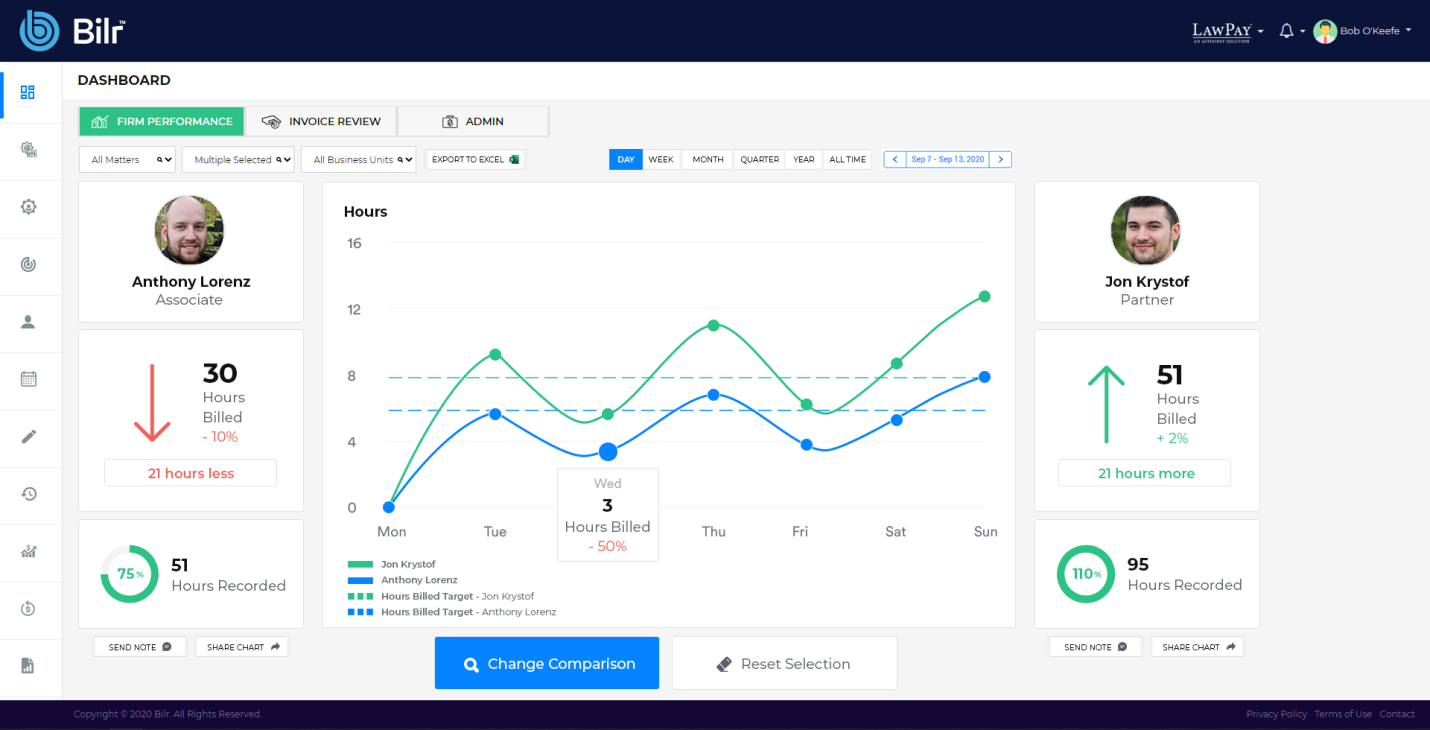To some lawyers, prioritizing certain aspects of their law firm practice management can pose a struggle. Many will focus solely on accurately capturing billable time, and understandably so, seeing as most lawyers still charge by the billable hour, and thus only get paid for the time they track.
Beyond that, tracking metrics such as billable hours can also assist with painting a clearer picture of firm performance in order to better manage the practice as a whole. However, only looking at billable hours when it comes time for practice management can leave a firm viewing only part of the puzzle. It can be difficult to ascertain which metrics would best serve this analysis of practice management, and many lawyers find themselves wondering what exactly they should be paying attention to when it comes to practice management metrics.
What are 3 key law firm practice management metrics?
- Hours recorded per day: Ideally, lawyers will record roughly 8 hours a day - even if the hours are not directly billed to the client, they should still be clocking a standard work day. However, it is easy to fall into the trap of not entering hours that cannot be billed to clients because they may be deemed less important. That is not necessarily the case, as non-billable hours can still contribute to an overall performance measurement for individual lawyers and the firm as a whole. And, the longer a lawyer waits to record their daily hours, the less likely they are to be entered at all, so it is dually important for lawyers to utilize quick and easy methods of tracking their hours.
- Hours billed per day: This is the bread and butter of a lawyer’s paycheck. Unfortunately, much like hours recorded, billable time gets swept aside because recording the hours can be a bit tedious without the assistance of an efficient software platform, and the longer lawyers wait to record their billable hours, the more errors there will likely be when they finally submit them, which in turn reduces revenues. Legal billing software like Bilr can prevent this with engagement letter and billing guideline checks that ensure billable time is being recorded properly. The payoff? An average of 6-11% saved per invoice, which would have otherwise been lost without the use of Bilr.
- Accounts Receivable: How much has already been billed - and what has not yet been paid by the client - gives lawyers an idea of what amounts they need to spend extra time chasing down. The pitfall of not tracking accounts receivable metrics when they are forgotten or pushed off? Losing those extra unpaid dollars when they are not collected in time (or at all). Timekeeping software with bill reminders built in can help mitigate this issue.
In addition to being tracked for practice management purposes, these metrics can also be used for gamification and detailed performance reporting. Lawyers need to know how they stack against their peer set - and this can only be realized through proper timekeeping. When that is taken care of, lawyers can then have the relevant metrics for both themselves and their peers easily accessible in the dashboard they work off of if they are utilizing software like Bilr.

All of these metrics can help illuminate the larger picture of a law firm’s operations. And beyond just providing a more comprehensive understanding, utilizing multiple metrics can assist with increasing efficiency throughout the firm. In an era where digital software is available wherever you go - on your mobile and desktop devices - there is no reason to not implement programs to make timekeeping and billing a breeze.




